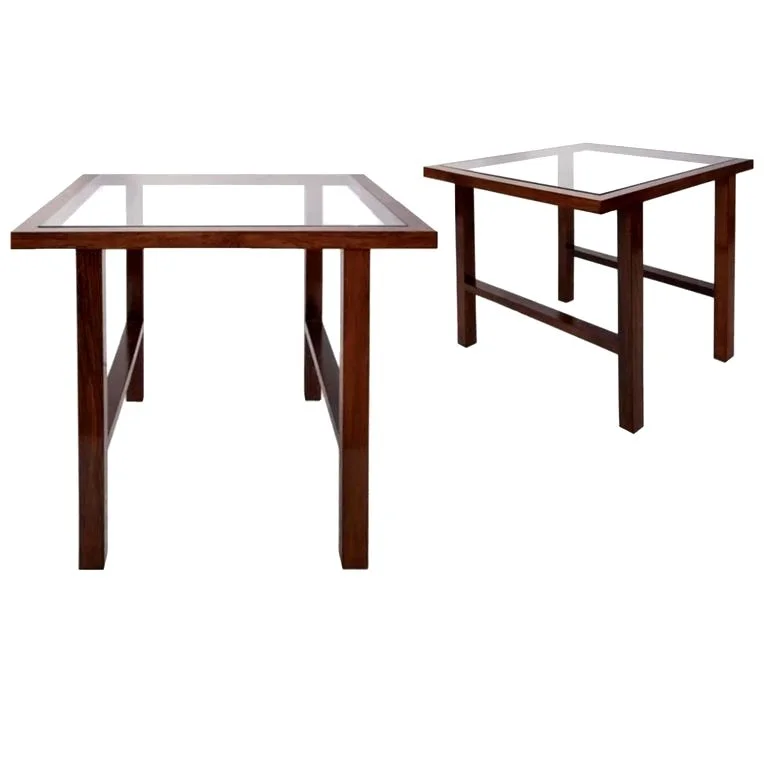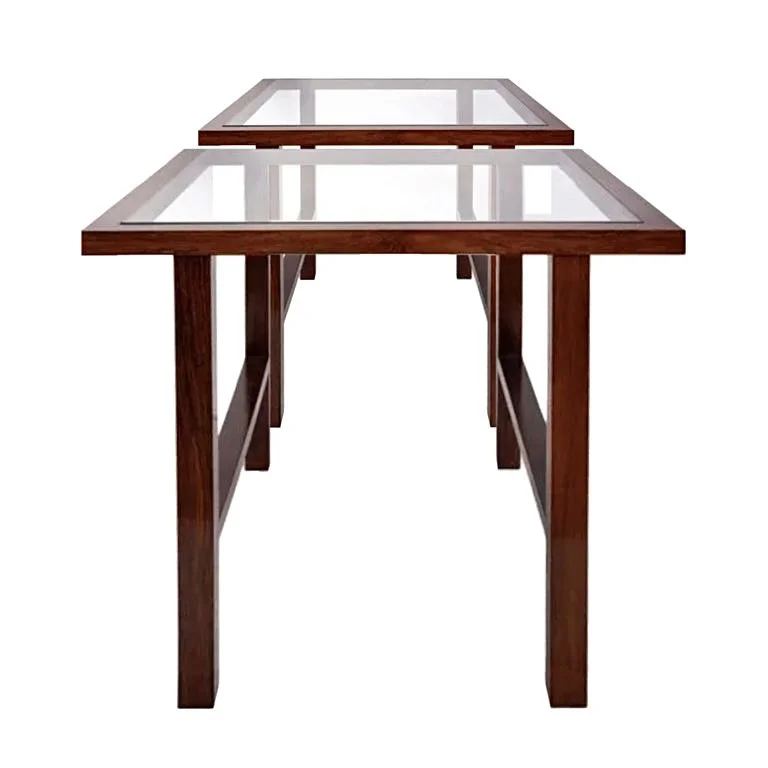Branco & Preto Caviuna Side Table, Glass Top, Luiz Pássaro, Brazil, 1960s
Branco & Preto Caviuna Side Table, Glass Top, Luiz Pássaro, Brazil, 1960s
Branco & Preto Brazilian Mid-Century Modern side table with glass top set in Caviuna wood frame. 21.5" H x 25.5" W x 25.5" D. Listing is for single table.
Caviuna is a Brazilian timber tree yielding a heavy, hard dark-coloured wood streaked with black. Table features glass top effortlessly embedded in the wooden frame. Gorgeous sculptural rectangular recessed legs. The strong lines and masterful proportions, sculptural yet unassuming - effortlessly stylish. Made by Luiz Pássaro, noted mid-century São Paolo woodworkers who often worked with designers from the Branco & Preto effort.
About Branco e Preto:
In the Provincial of São Paulo of the 1950s, a group of architects consisting of Roberta Aflalo, Jacob Ruchti, Miguel Forte, Plínio Croce, Carlos Millan and Chen Y Hwa, got together to create a furniture shop that could cater to their modern and sophisticated view of architecture and house their designs. After graduating with degrees in architecture at The Mackenzie School of Engineering, they needed furniture suitable for the architecture style they practiced. As a group of friends they rallied around an IDEA advanced by Roberto Aflalo to open a store that sold pieces of modern design furniture. In 1952, they founded Branco & Preto to address their need to furnish the houses commissioned to them with an innovative style. They decided upon the name ‘Branco e Preto’ (White and Black), colours that would often be featured in their fabrics made especially for the store by the Lanfício Fileppo.
The São Paulo-based shop rapidly became a reference for architects, who would visit to become familiar with the trends and discuss the pieces that broke with the traditional, stout lines that were used until then. With its high prices and focus on the elite of São Paulo, the store often catered to customers who had their homes specifically created by one of the group's architects and the furniture was often designed or adapted with a specific residence in mind. Brazilian woods were combined with glass, iron and calacatta marble. Like many Brazilian furniture brands, it never had Industrial Production and as a result everything was made by hand. Branco e Preto remained open until 1970, and during its existence, the collective created pieces of furniture that inspire Brazilian designers to this day.
Literature:
Branco e Preto: Uma história de design brasileiro nos anos 50, Marlene Milan Acayaba, Instituto Lina Bo e Pietro Maria Bardi, 1994.
Branco e Preto, Marcelo Aflalo, Paralaxe editora, 2005.
Revista Claudia. A revista amiga, Abril, 1961.



